Behind Every Shofar
| August 31, 2021We met with an expert shofar maker in Modiin Illit, in Eretz Yisrael, who is ready to share all the details with you!
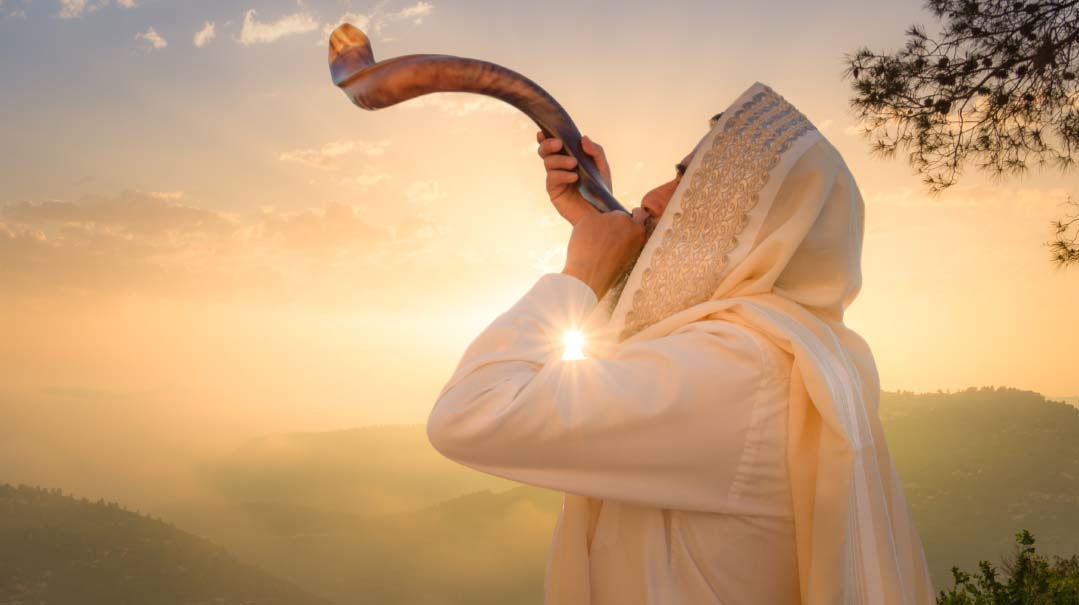
Photos: Elchonon Kotler
We arrive at the shofar maker’s home on a hot, sticky summer evening. Rosh Hashanah seems distant, but I know it will be here sooner than I think. After all, Chazal tell us that the name of the month “Av,” stands for “Elul ba,” Elul is coming. Rosh Chodesh Av is mere days away, and at Elul’s close, Rosh Hashanah will be upon us.
The Rav greets us, and then says, “Eid-Al Ahda is in a few days.”
Huh? He smiles at our confused faces. “We have to thank Eid-Al Ahda for providing most of our shofros,” he says. “It’s a Muslim holiday. They celebrate it in commemoration of their version of Akeidas Yitzchak.” I didn’t know the Muslims had a holiday for that, but I guess it makes sense, seeing as Avraham Avinu is their forefather, too.
“During Eid-Al Ahda,” the Rav continues, “the Muslims slaughter many animals for their celebrations. All those rams have horns on their heads.” He proceeds to pull out a large thing, which turns out to be a skull with two horns. “This is the skull of a ram,” he explains. He shows us the eye sockets and where the ram’s brain was. “And these are the ram’s horns,” he says, running his hand along the horns. “Each ram provides us with two shofros. Some people have the minhag to prefer the horn from the right side for their shofar, but there’s not a clear source for that minhag.” The shofar maker shrugs. Then he asks us if we know why a shofar is called a shofar, but we have no clue. “Shofar is from the lashon of shforferet,” he says, “because it’s hollow inside.”
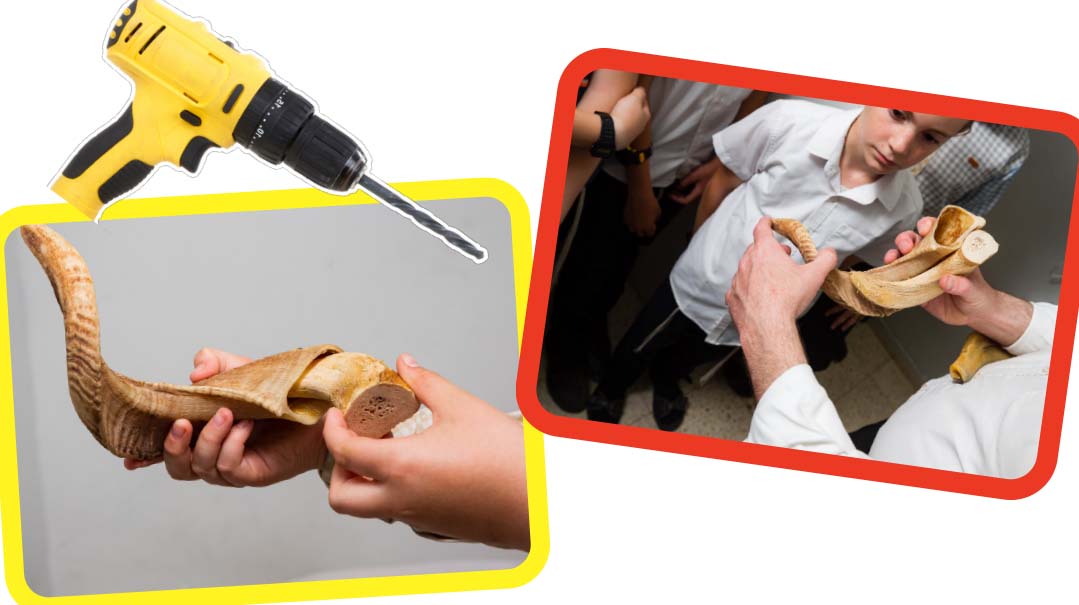
Step 1: Making the shofar hollow
The Rav shows us a horn from the head of a deer. It isn’t hollow. “Horns have bone inside them,” he says. “When we dry animals’ horns for a long time, the bone actually separates from the horn.” To prove it, he slips the bone right out of the horn he’s holding. “I dried this one right here, on my porch,” he tells us.
“Does the bone always come out so easily?” Shlomo asks. The shofar maker shakes his head. “No, they don’t always come out.” He shrugs again. Those horns can’t become shofros, because in order to be a shofar, it needs to be hollow inside. That hollow is the place where the bone was.
But even when the bone falls out, the shofar isn’t totally hollow. The shofar maker shows us that the bone doesn’t go in all the way. The narrow part of the shofar remains blocked with solid horn, and that must be drilled out to make the shofar completely hollow so it can be blown. Then he points out the problem with that: ram’s horns are twisted, and drills don’t really do fancy twists and turns like crazy straws do. “So what do you do?” Eli asks curiously.
Step 2: Straightening the twisted horn’s base
“Ah,” the Rav says. “That brings us to the next step. After the ram is shechted or killed, the horns are removed and then dried so the wide part of the bone comes out. The next stage is putting the ram’s horn into a fire — yes, a real fire.
Eli gapes at the thought. “A real fire? Like a Lag B’omer bonfire?” The Rav assures him that yes, that is precisely what he means. Once the shofar is very hot and has softened, the shofar’s twisted bottom is straightened out with the help of special clamps. “Now the rest of the horn can be drilled,” the shofar maker explains.
“Does every shofar go through this process?” Shlomo asks, fingering one of the many shofros in the room.
“Yes,” the Rav replies. “Unless you want a shofar with the chumrah of lo meubad, unprocessed. Then we cut the shofar higher up, at a straighter point, so that it can be drilled in a straight line.” He also tells us that these unprocessed shofros need to have an easier shape to begin with; not every horn can become an unprocessed shofar. “Which community keeps this chumrah?” Eli wants to know. The Rav replies that Yemenites are the most particular to use unprocessed shofros. “It’s a common misconception that the long, twisted shofar is a ‘Yemenite shofar,’” he says. “Really, they prefer the lo meubad shofar, from a sheep. The long, twisted shofros don’t come from sheep. They come from an animal called a kudu. Yemenites usually go according to the opinion of the Rambam, who says to use only a ram’s horn.”
“Are lo meubad shofros easier to use?” Chaim wants to know. The shofar maker shakes his head, and tells us that actually, no, they are much harder to blow. You need a lot of practice and skill to be able to blow an unprocessed shofar.
Straightening out the shofar is a delicate business. If the person doing the straightening and stretching isn’t gentle enough, the shofar can crack and even become passul. “It’s the most delicate part of the shofar,” the Rav explains.
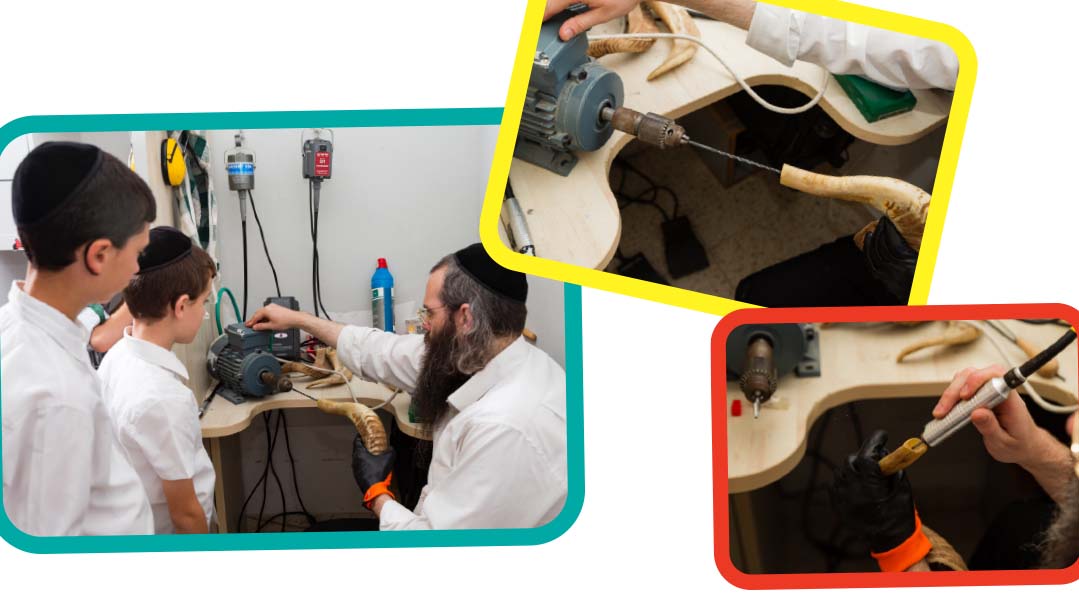
Step 3: Drilling the remaining horn to make the shofar fully hollow
After the shofar is straightened, the remaining horn can be drilled out. After all, the shofar needs to be hollow so that the air can proceed unhampered from the baal tokeia’s mouth all the way through the shofar, to produce that familiar, piercing sound. Drilling through the narrow opening is hard — you need to be careful, making sure to drill straight. If you slip, the drill can pierce a hole in the side of the shofar. Often, the opening of the shofar also needs to be stretched, or opened, a little more. There are many ways to do that, using hot water, hot oil, or — in difficult shofros — fire again.
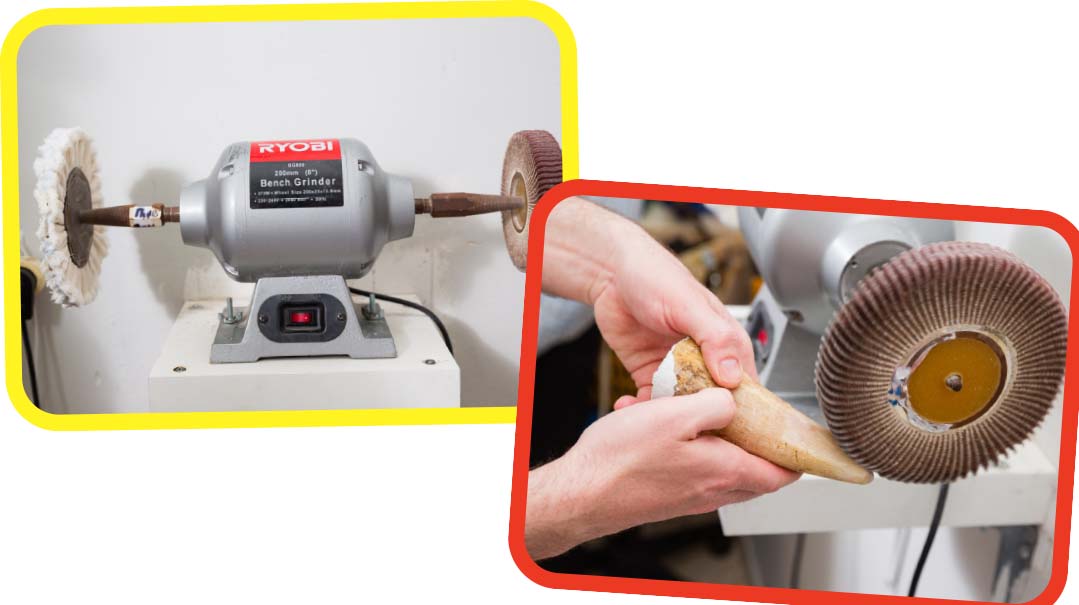
Step 4: Making the shofar shiny and beautiful
After all that hard work, the shofar is completely hollow. But it’s not ready yet. “Now the shofar needs to be sanded down, smoothed,” the shofar maker says. He shows us a rough shofar that hasn’t been sanded down, and a glossy, shiny shofar. How does the shofar get that shiny, beautiful appearance?
“One of the ways to make any material shiny,” the Rav says, “is to make it completely smooth. When it’s completely smooth, it becomes glossy. This goes for plastic, metal, ram horns, anything. So our job is to make the shofar totally smooth.” How does he do that? He says one can use sandpaper and rub the shofar all over, again and again. But that would be terribly painstaking work, and surely impossible to do when producing many shofros. “Sandpaper is good for small areas,” he explains. “Not for when you need to smooth an entire shofar.”
The shofar maker shows us a machine with two wheels, one on either side. Each wheel is made of a different material; one is a sandpaper wheel, and one is a cotton wheel. Then the Rav takes out a light blue, rectangular brick. It’s made out of a material called carborundum, made out of silicon carbide. It’s commonly used for cutting, grinding, and polishing. He rubs the brick all over the cotton wheel. Apparently, it allows each shofar to become the smoothest it can be, resulting in the glossiest sheen possible. Each shofar gets held next to the wheels, first the sandpaper wheel, and then the cotton-plus-carborundum wheel. Carefully, the shofar maker holds the shofar against the wheel and switches on the machine. The wheel whirs around and around as it rubs against the shofar, and before our eyes, the rough, dry shofar slowly becomes polished and beautiful. It smells just awful, though. It smells like… like what animal horns must smell like when they get hot. “Now try to imagine the smell when we burn the shofros,” the shofar maker says, smiling. “It’s a whole lot worse!”
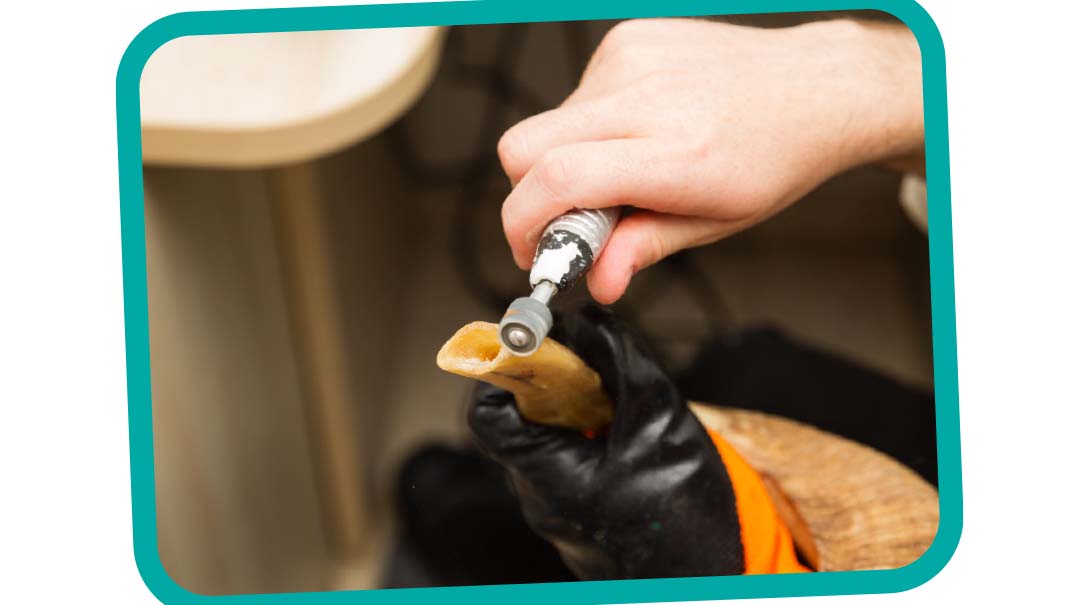
Step 5: Perfecting the shofar’s opening
It’s also very important to smooth out the opening of the shofar, so it doesn’t chas v’shalom cut the baal tokeia’s lips. For that, the shofar maker shows us a finer tool, which he tells us is actually a tool jewelers use, called a Dremel. He can drill and widen the opening with certain drill bits, and smooth edges with others. There’s a soft piece that fits onto the drill head for that. If the delicate drilling done at the opening of the shofar isn’t gentle enough, it can make holes in the shofar and render it passul. This drill is similar to the drill a dentist uses, and makes a similar sound (though dentists use even finer tools).
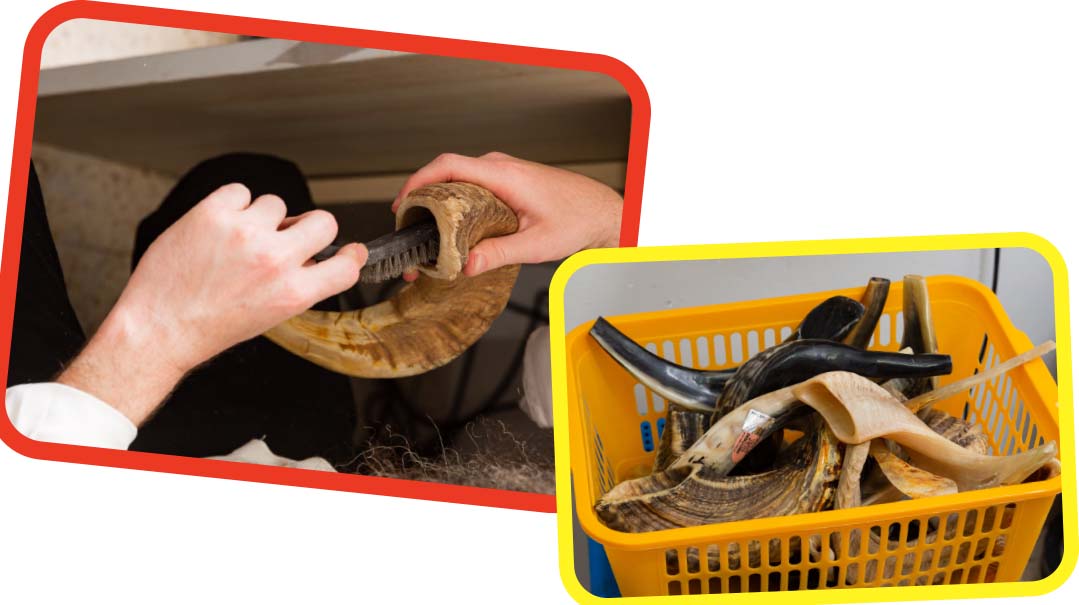
Step 6: Cleaning and fixing any imperfections, receiving Hashgachah
Now the shofar is ready to use: It’s hollow and smooth, with a smooth opening. The shofar maker uses a special brush to clean the inside of the shofar; any obstruction can affect the airflow through the shofar, and the sound that it will produce. When a shofar’s insides are clean, the sound it makes is clearer. Sometimes, special acids and chemicals are carefully used to clean the insides of the shofar.
The shofar also needs to be checked by a mashgiach and receive a hechsher that it is a kosher shofar.
“Factories make hundreds of shofros a week,” the shofar maker tells us. “The shofros that I make get unique, individual care. I always try to figure out how I can make this shofar the best that it can be.”
As we head back out into the muggy evening, I reflect on everything we’ve just seen and on how much goes into creating each shofar. You know what they say: Behind every great shofar… is a great shofar maker.
Pro tips from an experienced shofar maker
Don’t buy a shofar for less than 250–300 shekels (75-95 dollars). Small, simple shofros can’t produce the right sounds. People sometimes come to me and tell me that they can’t blow. I hand them a proper shofar and they blow beautiful tekios. They are shocked, but I tell them, “Before, you were trying to blow without a shofar. Now you are blowing with a shofar.
Any type of moisture is bad for shofros. The moisture that comes in contact with shofros most often is saliva, from the blower’s mouth. You can use a pipe cleaner to clean the shofar’s opening when you’re done using it (but be careful not to use the sparkly pipe-cleaners, which are not good for shofros!).
Never wash your shofar with water, and never, ever dry it in the sun!
Don’t store your shofar in a closed bag or box. The best way to store a shofar is on an open shelf or in an open basket. If it gets dusty, wipe the outside with a soft, dry cloth.
Other than the quality of the shofar, the most important thing that affects the tekios is the baal toekeia’s lip muscles. If your lip muscles are weak, air will escape, and the sound will be less clear and powerful. Your lips can get tired when you still have air in your lungs to blow.
The way to strengthen your lip muscles is to practice. I recommend 300 tekios a day — you can do it in three sets of 100. It shouldn’t take more than 15 minutes a day. And start, at the very least, one month before Rosh Hashanah. A friend of mine, a baal teshuvah, used to play the trumpet professionally. He told me that they would practice for 14 hours a day!
When your lip muscles get tired, just rest for a minute or two before continuing.
(Originally featured in Mishpacha Jr., Issue 876)
Oops! We could not locate your form.






